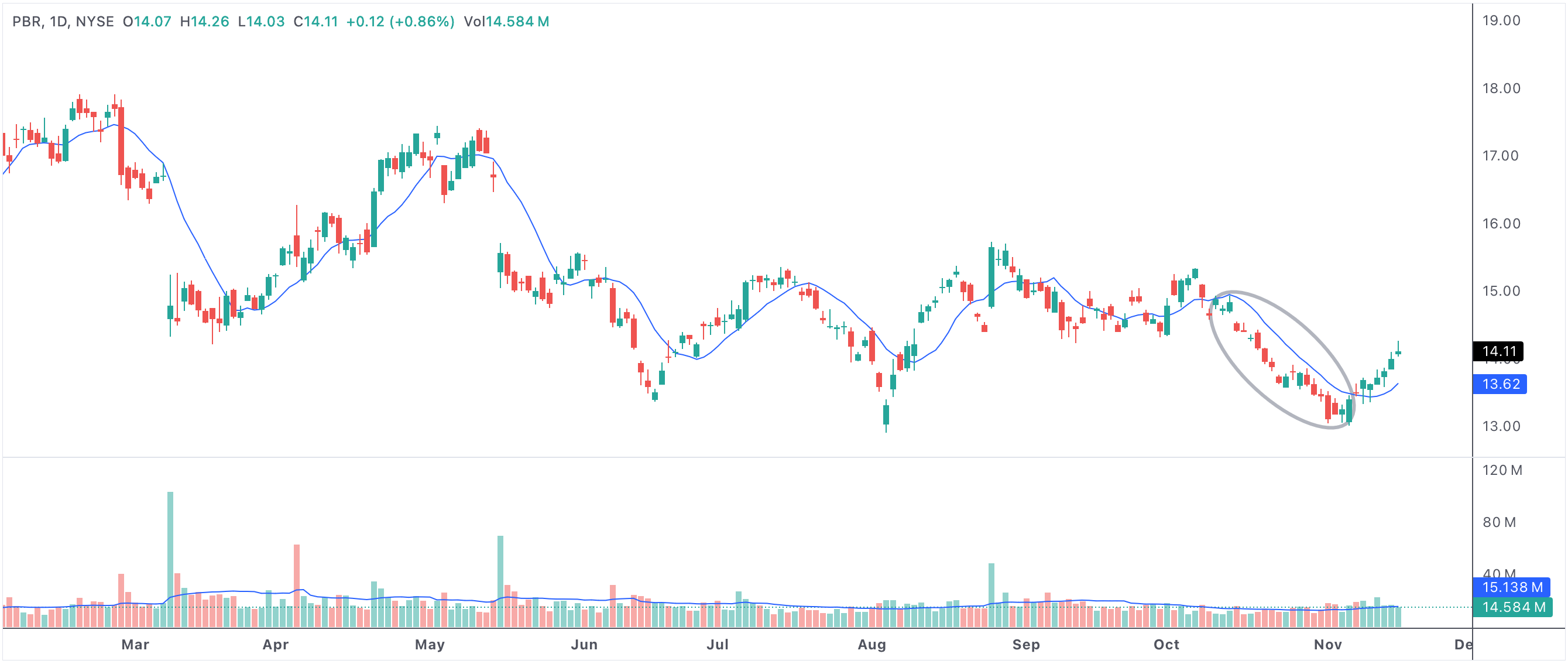Stocks trading below the 10-day SMA for the longest consecutive periods
When stocks trade below their 10-day simple moving average (SMA) for extended consecutive periods, it can be a compelling signal for traders and investors looking to capitalize on potential bullish reversals. The 10 SMA is a widely used technical indicator that measures short-term price trends. A stock that remains below its 10 SMA for many days in a row is generally considered to be in a short-term downtrend, often reflecting persistent selling pressure or a temporary lack of buying interest. However, this can also indicate that the stock has entered an oversold condition, which may set the stage for a rebound.

dayslt10sma
Example of a stock remaining below its 10-day simple moving average for an extended period
Stocks below 10 SMA for longest consecutive days
Understanding the Significance of the 10 SMA
The 10-day SMA is frequently used by traders to gauge short-term momentum. When a stock trades above its 10 SMA, it is generally interpreted as a sign of strength or upward momentum. Conversely, extended periods below this average often represent sustained weakness or bearish sentiment. Yet, if a stock remains below the 10 SMA for many days without a fundamental change in its outlook, it may simply be experiencing a technical correction rather than signaling ongoing fundamental problems.
Why Extended Periods Below 10 SMA May Signal Opportunity
Stocks that have lingered below their 10 SMA for unusually long stretches often catch the attention of contrarian traders and institutional buyers. These market participants look for situations where negative sentiment is overdone and a reversal could be imminent. If other indicators—such as relative strength index (RSI), volume analysis, or broader market stability—support the idea of oversold conditions, such stocks can become attractive candidates for a bullish rebound.
- Oversold conditions often attract buyers looking for value and a quick reversal.
- Institutional investors may step in, sensing an opportunity to accumulate shares at a discount.
- Recovery above the 10 SMA after a long streak can spark renewed buying momentum.
Typical Market Behavior and Investor Psychology
Persistent trading below the 10 SMA is often the result of negative news flow, broader market corrections, or sector-specific weakness. However, as more stocks in the market or a specific sector show this pattern, it can indicate that sellers have exhausted their momentum. Investors may begin to reassess valuations, recognizing that the fundamental picture remains intact, even if the technicals appear weak. As selling slows and bargain hunters enter, these stocks can experience a snap-back rally once buying resumes.
The psychology of these setups is driven by fear and eventual greed: the longer a stock stays below the 10 SMA, the more fearful sellers become, and the greater the pent-up demand from buyers waiting for a clear reversal signal.
How to Use This Signal in Trading Strategies
Many traders screen for stocks below their 10 SMA for the longest consecutive days as a way to find oversold opportunities. Common strategies include:
- Buying when the stock closes above the 10 SMA after a long streak below it.
- Looking for confirmation from other technical indicators such as RSI or MACD turning bullish.
- Watching for above-average volume as an early clue that institutional buyers are returning.
- Pairing with fundamental analysis to ensure there is no underlying negative news driving the weakness.
Stop-losses are often placed below recent lows to manage risk, while profit targets can be set near key resistance levels or higher moving averages.
Examples and Market Context
Historically, stocks that have experienced the longest consecutive streaks below their 10 SMA—especially when this occurs in the context of a market-wide selloff—have sometimes delivered sharp rebounds once sentiment shifts. For example, after a sector rotation or following negative earnings surprises, high-quality names may be unfairly punished and trade below their 10 SMA for a significant period. When buyers regain confidence, these stocks can rally quickly as both short sellers cover and new investors move in.
In summary, screening for stocks below the 10 SMA for the longest consecutive days can reveal compelling opportunities, particularly when other factors point to oversold conditions and short-term value. This setup is popular among swing traders, value investors, and those seeking early signals of a potential market turnaround.